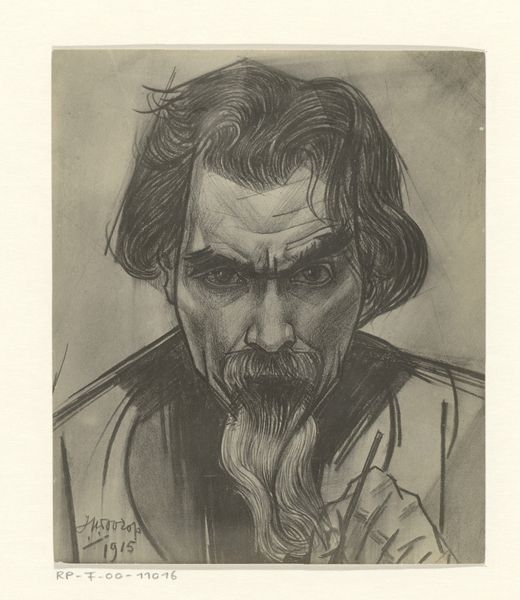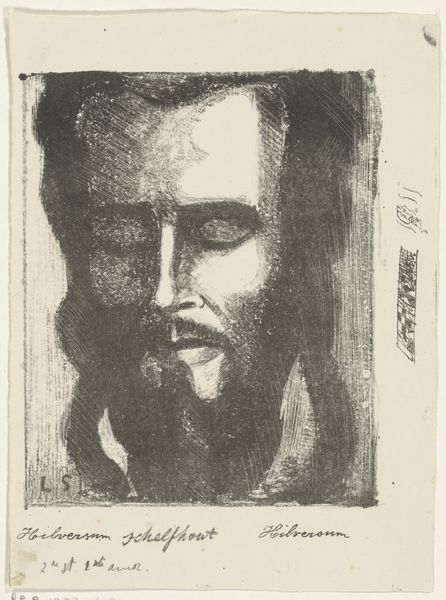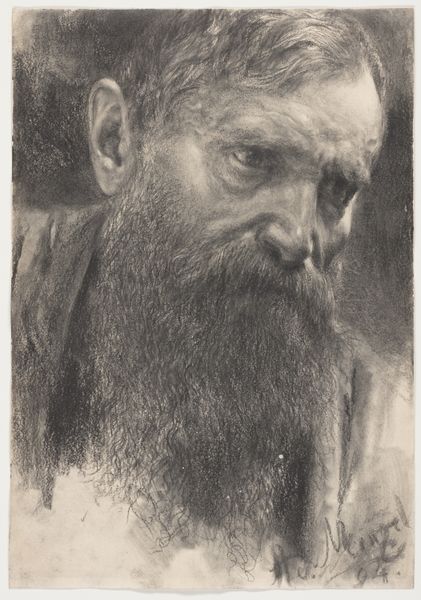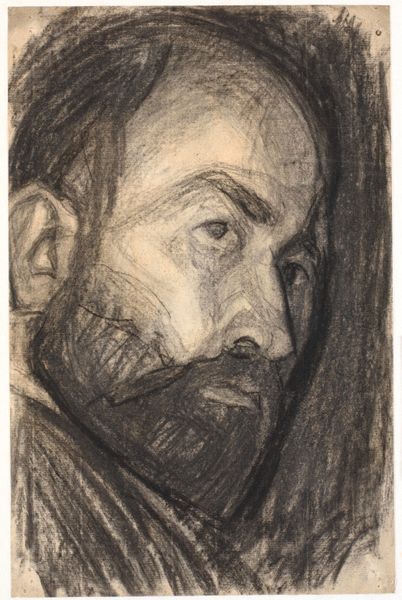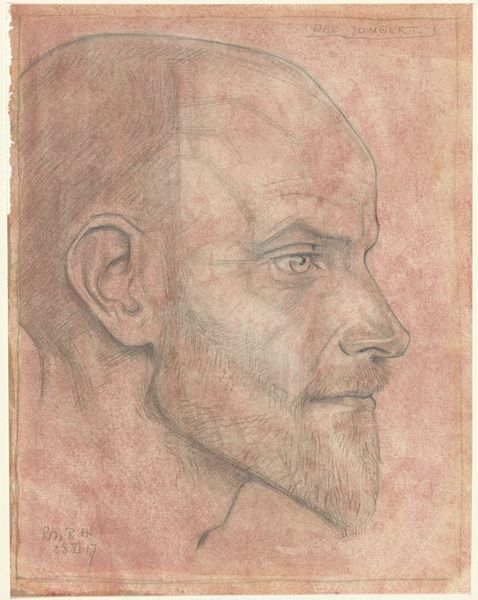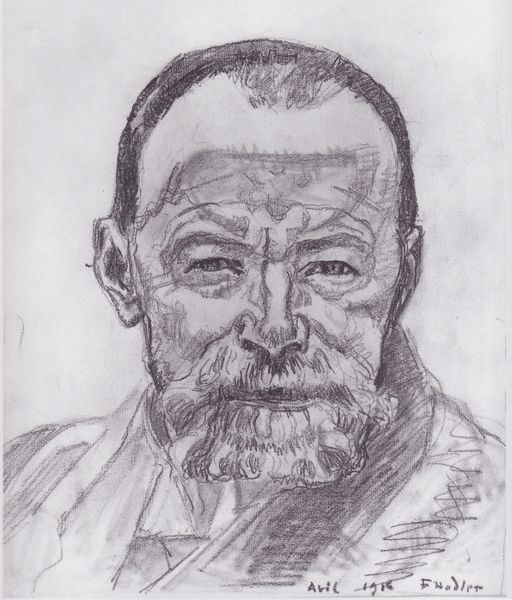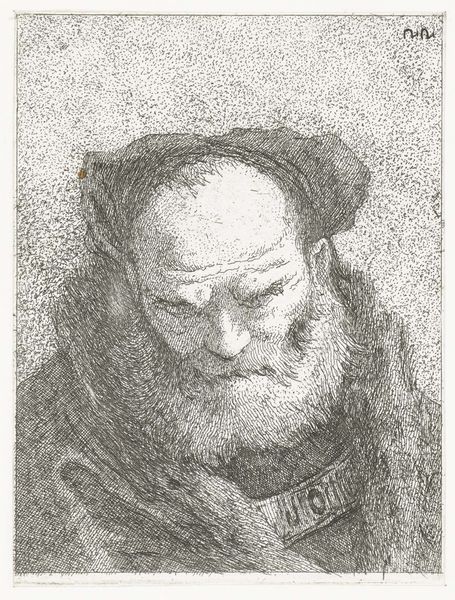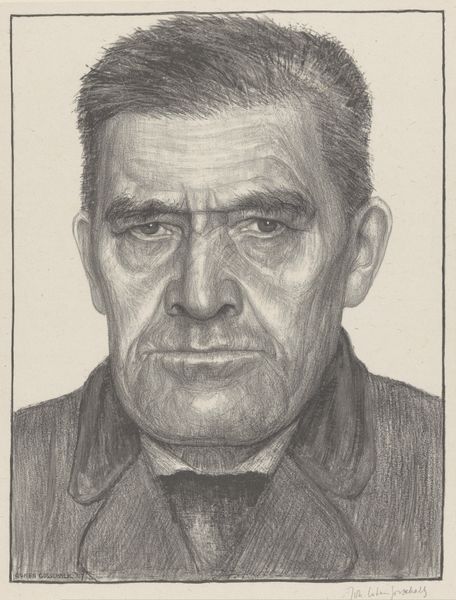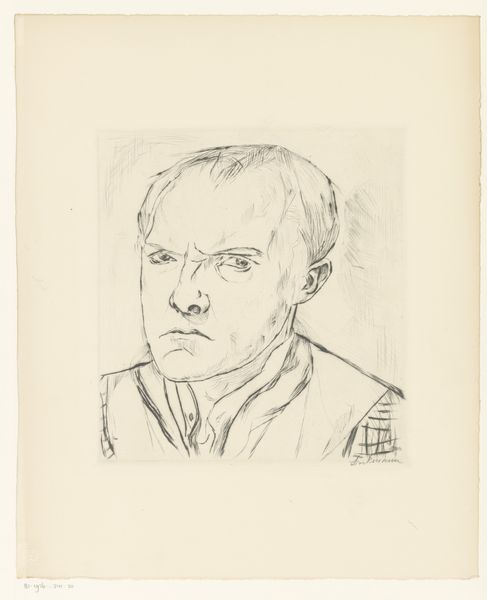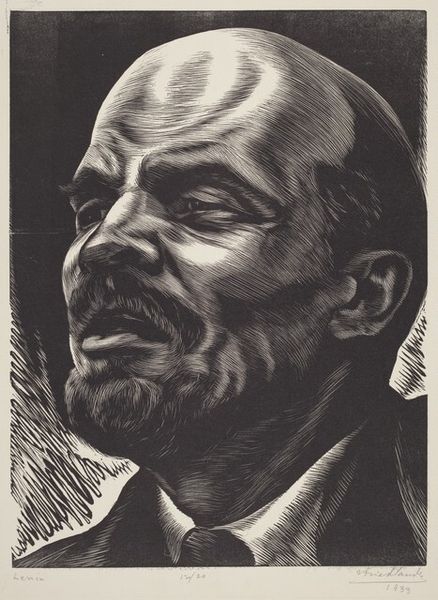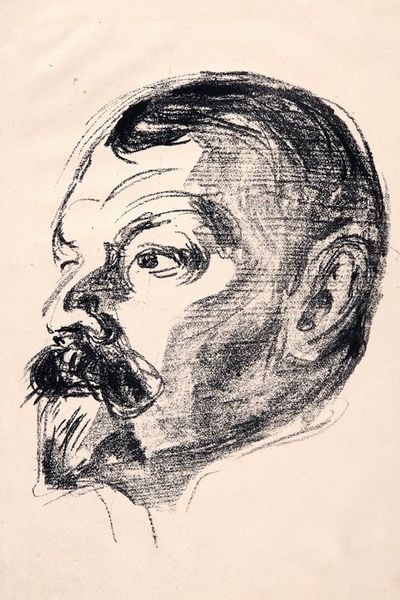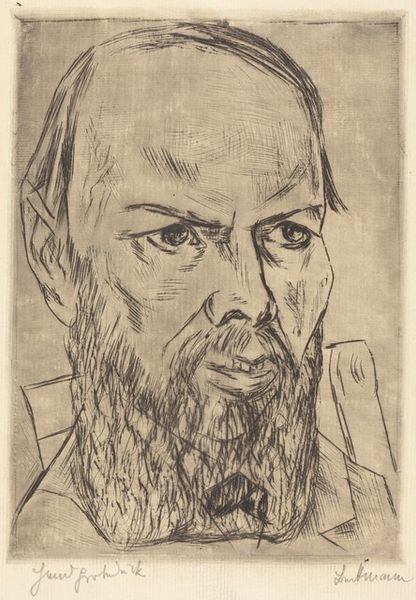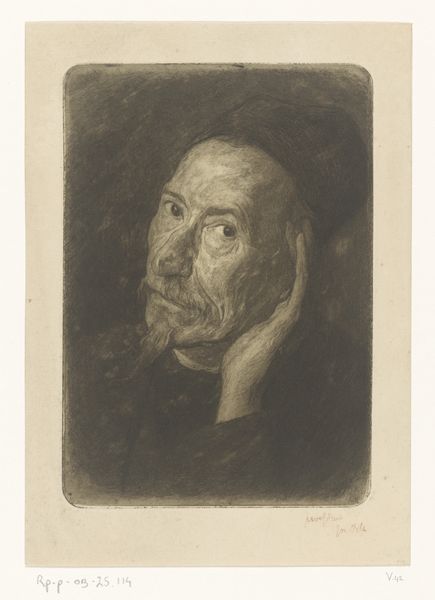
drawing, pencil, graphite
#
portrait
#
drawing
#
self-portrait
#
pencil drawing
#
pencil
#
graphite
#
portrait drawing
#
modernism
#
realism
Dimensions: height 245 mm, width 175 mm
Copyright: Rijks Museum: Open Domain
Editor: Here we have Chris Lebeau's "Portrait of Frederik van Eeden," created sometime between 1888 and 1945. It's a pencil drawing, very detailed. The sitter’s intense gaze really jumps out. What do you see in it? Curator: The materiality of this work is fascinating. Look closely at the labor involved: the relentless, repetitive mark-making of the pencil, building tone and form. This isn't just representation; it's a record of a physical process. It begs the question: what drove Lebeau to commit so much time and effort to this detailed portrait? Was it commissioned, or was this about his relationship to Van Eeden? Editor: I hadn’t thought about it like that, more of the artistic skill on display. So you're saying that understanding the labor behind it adds another layer? Curator: Absolutely. The intense gaze you mentioned - think about how many individual lines, how much time, it took to capture that intensity. Then consider the social context: was Lebeau elevating or scrutinizing his sitter? The very act of portraying someone is inherently linked to power dynamics and, here, the economic exchange implied by artistic patronage or, perhaps, the more intimate exchange of a friendship. Editor: That makes me consider the surface of the paper, too, now. The texture it offers, the graphite deposited layer upon layer... I didn’t consider it beyond the image itself. Curator: Precisely! It moves beyond just likeness. The materiality of graphite on paper, transformed through hours of labor, becomes central to the work’s meaning. We're not just seeing a portrait; we're seeing a testament to a process and relationship mediated through materials and making. Editor: This really changes how I look at drawings. It’s not just the end result, but about labor and social exchanges embedded in the piece itself. Thank you! Curator: And for me, your reaction underlines how our experience is always influenced by how art is distributed, displayed and consumed.
Comments
No comments
Be the first to comment and join the conversation on the ultimate creative platform.
